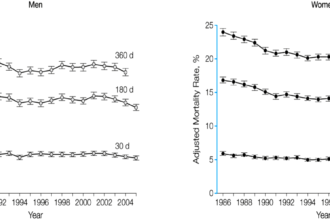With notably few exceptions, the American health care system has been financed on the basis of volume rather than value. That means that we’ve been paying providers for everything that they do, rather than paying them for the outcomes they produce. This is not common in other fields. For example, if you are in an accident and have to take your car to a body shop, you (or your insurance company) typically pay them for the work once. If they haven’t repaired the vehicle properly, you can typically return the car to them and they will “make it right” for no additional charge.
With notably few exceptions, the American health care system has been financed on the basis of volume rather than value. That means that we’ve been paying providers for everything that they do, rather than paying them for the outcomes they produce. This is not common in other fields. For example, if you are in an accident and have to take your car to a body shop, you (or your insurance company) typically pay them for the work once. If they haven’t repaired the vehicle properly, you can typically return the car to them and they will “make it right” for no additional charge. If you go out to eat, and the meal is not to your liking, the restaurant’s manager will typically offer to make you something else at no additional charge, or will discount the price of your unsatisfactory meal.
In health care, you pay the doctor to treat you, and if the treatment fails, you pay them to treat you again, and again, and again. Now, I’m not suggesting that this alone prompts physicians to do their job poorly or to provide more care than is necessary. Rather, I’m suggesting that the financial incentives are such that they do not reinforce physicians’ efforts to provide high quality care. Efforts to work around this include managed care and capitated payments, with the thinking that this shifts risk onto the providers and encourages them to doggedly pursue better outcomes. In some cases, this has worked. In other cases, it has backfired, as physicians simply reduce the amount of care they provide, much of it arguably needed care.
The latest development in this area is the implementation of financial penalties for hospitals with excessively high readmission rates among Medicare patients. As of October 2012, if a hospital’s readmission rate exceeds their expected readmission rate, they are fined by the Centers for Medicare & Medicaid Services (CMS). Right now, the maximum penalty is a 1% reduction in total Medicare payments over the coming year. By 2015, the penalty will increase to a maximum of 3%. This is a lot more money than it might seem from the percentage figures. In fact, it’s estimated to save Medicare roughly $300 million this year. That means, if hospitals don’t improve, CMS might keep nearly $1 billion a year starting in 2015.
Of course, the goal is to save even more money by using the penalty to encourage hospitals to prevent as many readmissions as possible. Medicare currently spends about $17 billion a year on readmissions, so there is considerable room for improvement and savings. However, I’m doubtful that the new penalties will achieve their desired effect. The reason is that hospitals have ways of artificially reducing their readmission rates. One prominent example is through the use of observation care, where patients are held in the hospital–sometimes for days–as outpatients. This is more costly for patients, who are responsible for a greater portion of their outpatient bills, it raises questions about the quality of care provided while a patient is under observation, and it seems like an ideal way for hospitals not to lose up to 3% of their Medicare reimbursement going forward. So, will penalizing hospitals for readmissions work? I doubt it. Not unless we find a way to prevent hospitals from working around the penalty.






